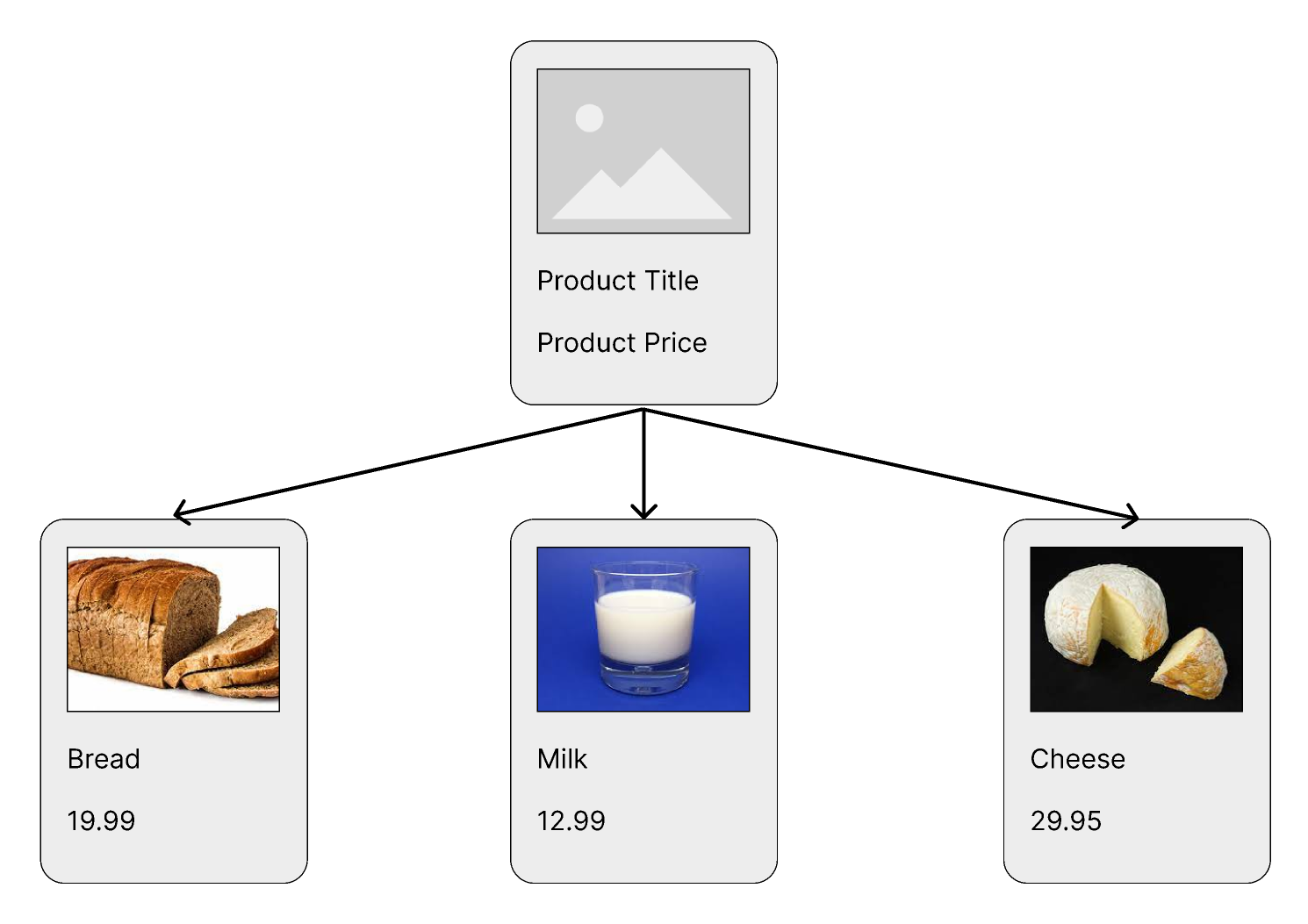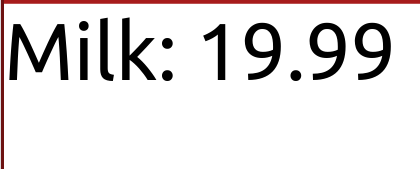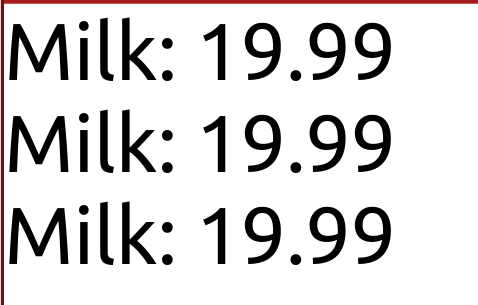Introduction
Components are a way for us to create reusable pieces of code. They are one of the main features of React.
What is a component?
Simply put, a React component is a function which returns JSX.
The idea behind components is that we create a single component for a UI element, such as a product card, and then we reuse this component for all of our data.
In the illustration below, we’ve created a single product card. We then use this product card for all of our products.

Basic example of a component and calling it
Below is a component called Product. This component returns <div>Milk: 19.99</div>. Right now this product has hard-coded data, we will eventually look at making this data dynamic:
function Product() {
return <div>Milk: 19.99</div>;
}
NOTE: A component must start with a capital letter e.g.
MyComponentinstead ofmyComponent.
To use this component, we would call it similar to an HTML tag, e.g. <Product />.
In the example below, we create the same Product component and then call it in our App component.
import React from 'react';
function Product() {
return <div>Milk: 19.99</div>;
}
function App() {
return (
<div>
<Product />
</div>
);
}
export default App;

We could use this component as many times as we would like. In the example below, we call the component three times:
import React from 'react';
function Product() {
return <div>Milk: 19.99</div>;
}
function App() {
return (
<div>
<Product />
<Product />
<Product />
</div>
);
}
export default App;

React Fragments (returning one parent)
In JavaScript, functions can only return one value. We can’t return more than one value at the same time. We might be able to return an object, or an array, which has multiple values, but we are still only returning one value (the object or the array).
React components are JavaScript functions; therefore, it has the same constraints: it can only return one value.
This means that when we return JSX, we can only have one top-level parent, e.g. one “wrapper” at the top-level of the JSX.
Consider the following example, which will throw an error. In this example, we are trying to return two separate JSX items. This is the equivalent of trying to have two separate values returned from a function, as JSX will compile down to React.createElement.
import React from 'react';
function App() {
return (
<li>
First list item
</li>
<li>
Second list item
</li>
);
}
export default App;
If we want to return adjacent components like the above, then we have a special React component called React.Fragment. This allows us to group together adjacent components into one parent without there being an HTML element generated.
import React from 'react';
function App() {
return (
<React.Fragment>
<li>First list item</li>
<li>Second list item</li>
</React.Fragment>
);
}
export default App;
React.Fragment shorthand
React Fragments have a shorthand, being <> and </>.
The example above has been converted to React fragment shorthand:
import React from 'react';
function App() {
return (
<>
<li>First list item</li>
<li>Second list item</li>
</>
);
}
export default App;
Lesson task
Goal
To be able to create a basic component.
Brief
Complete the level 1 process.
NOTE: Lesson tasks do not get submitted on Moodle and are not assessed by tutors. They are mainly there for you to practise what you have learnt in the lesson.
Level 1 process
- Create a component called
Greeting. - Make this component display a greeting, e.g.
Hi Ola Nordmann!. - Call this component in
<App>.